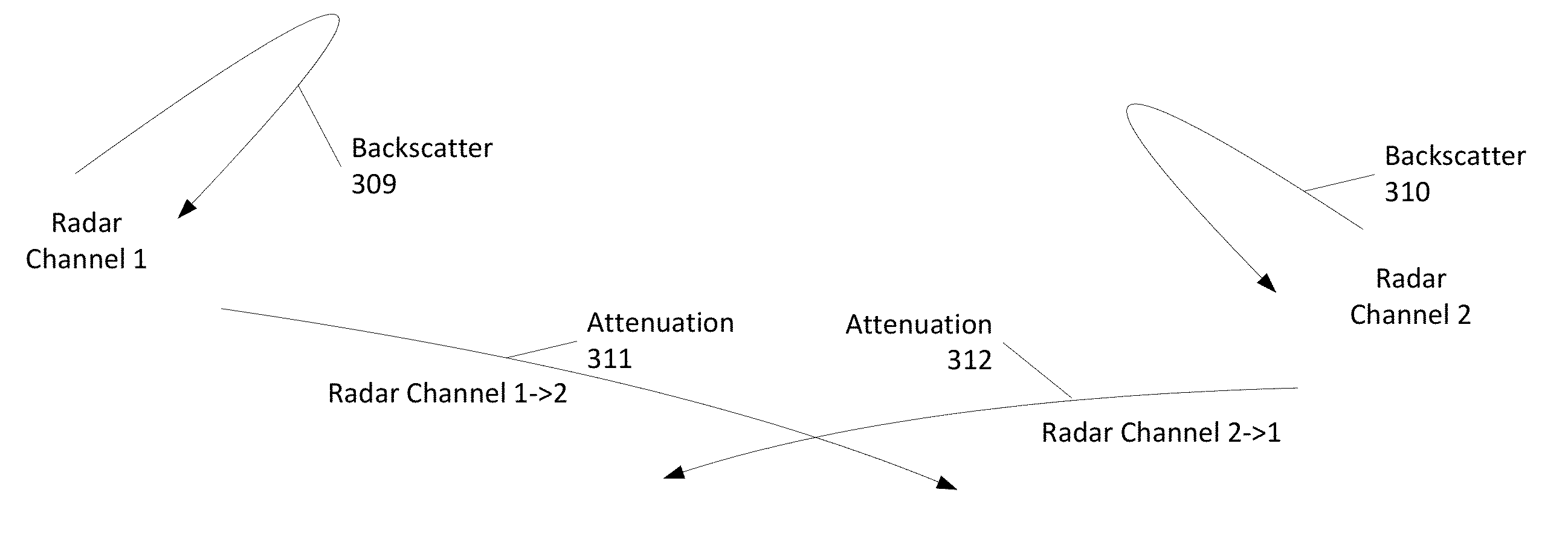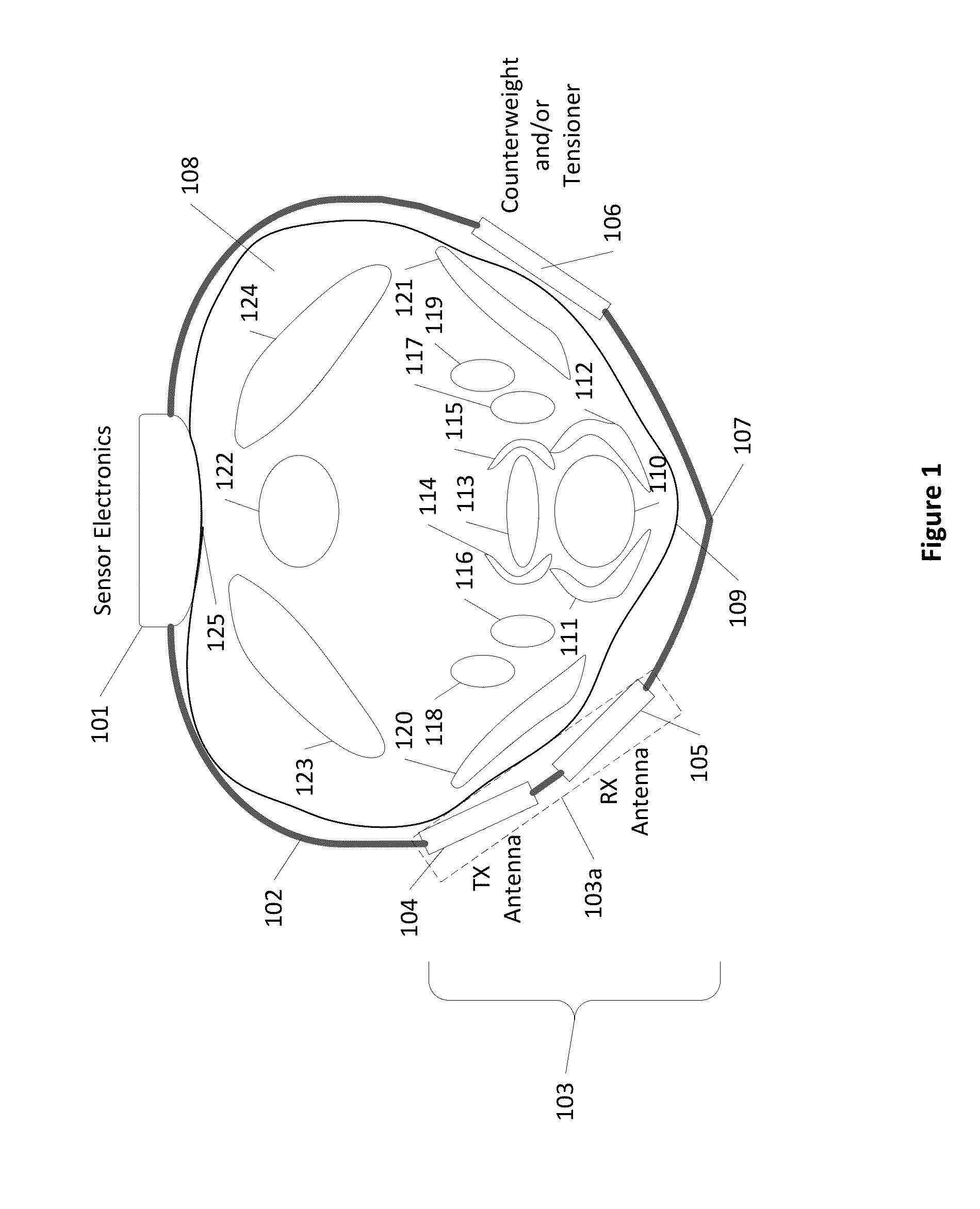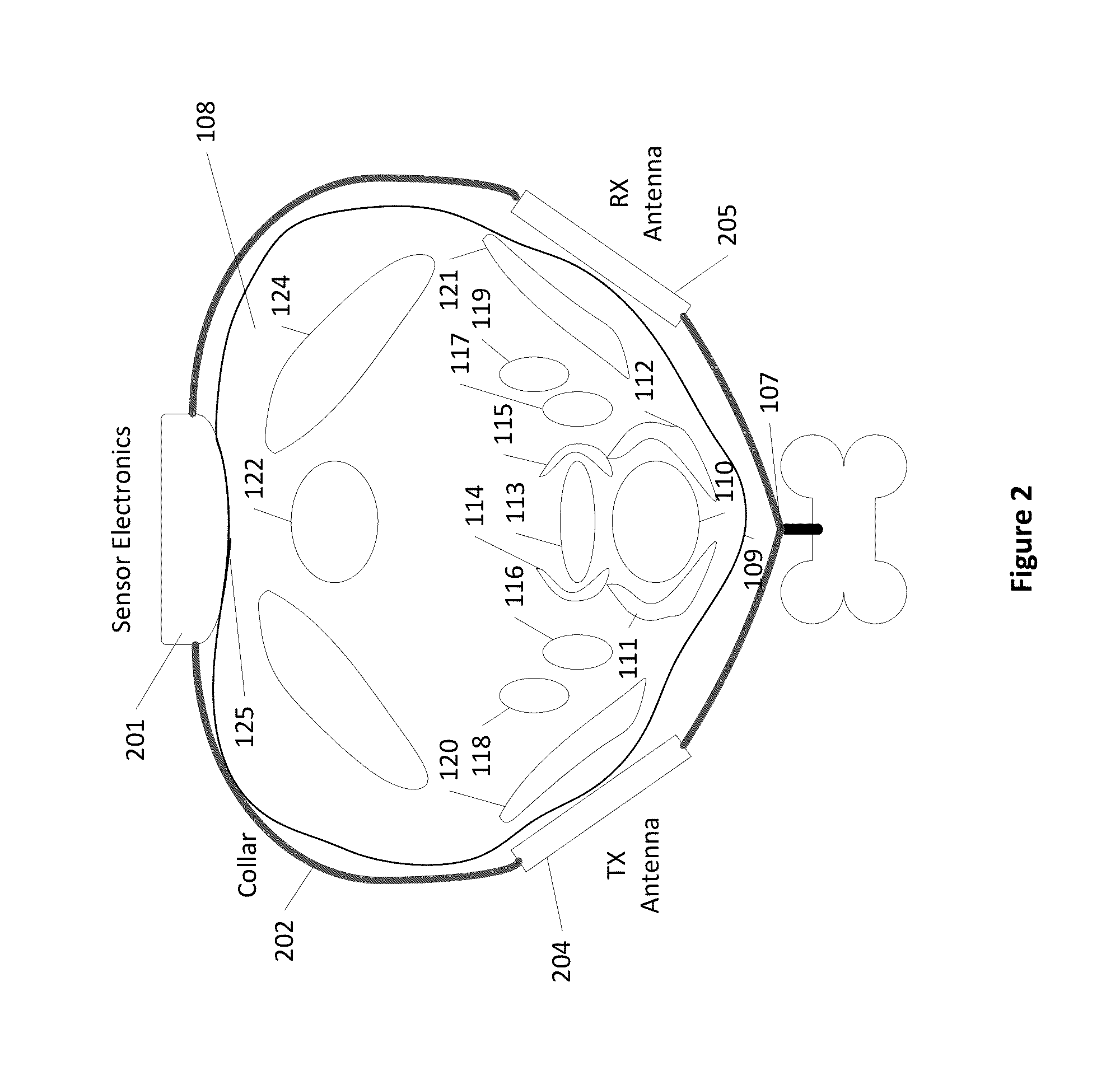Animal Health and Wellness Monitoring using UWB Radar
a technology for animal health and wellness, applied in the field of radar, can solve the problems of negative impact on health, difficult animal health monitoring, impracticality for use with animals with fur or feathers
- Summary
- Abstract
- Description
- Claims
- Application Information
AI Technical Summary
Benefits of technology
Problems solved by technology
Method used
Image
Examples
Embodiment Construction
[0026]The following description relates to configurations of ultra-wideband (UWB) sensors for obtaining physiological information from mammals. Specifically, aspects of the disclosure pertain to the use of UWB sensors as medical radar to the extent they use very low power Ultra Wide Band (UWB) radio frequency (RF) energy. In practice, the UWB medical radar emits a narrow pulse of electromagnetic energy, which propagates into a body. As the energy enters the body, small amounts of the incident energy are reflected back to the device. The reflections are due to the differences in dielectric properties of the illuminated tissues and organs. The reflected energy is then received and processed using application-specific signal processing algorithms to extract information on the type, location, size, and motion of the illuminated tissues and organs. It is appreciated that the greater the dielectric constant between illuminated tissues and organs increases the reflection (or backscatter) o...
PUM
 Login to View More
Login to View More Abstract
Description
Claims
Application Information
 Login to View More
Login to View More - R&D
- Intellectual Property
- Life Sciences
- Materials
- Tech Scout
- Unparalleled Data Quality
- Higher Quality Content
- 60% Fewer Hallucinations
Browse by: Latest US Patents, China's latest patents, Technical Efficacy Thesaurus, Application Domain, Technology Topic, Popular Technical Reports.
© 2025 PatSnap. All rights reserved.Legal|Privacy policy|Modern Slavery Act Transparency Statement|Sitemap|About US| Contact US: help@patsnap.com



